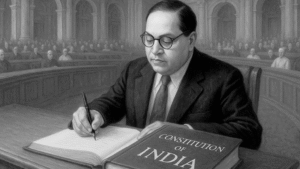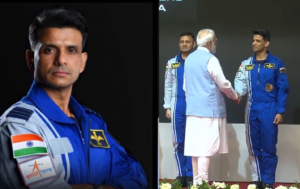Gyrocopters in India: Aerial Revolution for Tourism, Security, and Traffic Solutions
An Introduction: Revolutionizing Tourism, Traffic, and Surveillance
India is on the brink of a transportation revolution with the introduction of gyrocopters—aerial vehicles that offer a cost-effective, agile, and efficient alternative to helicopters and airplanes. As congestion in urban areas continues to rise and the need for effective aerial surveillance grows, gyrocopters are emerging as a compelling solution for both civilian and defense applications.
With India’s first commercial gyrocopter services launching in Uttarakhand for tourism, and plans underway for use in surveillance, emergency services, and potentially even urban commuting, this compact flying machine could become a common sight in Indian skies.
What is a Gyrocopter?
A gyrocopter, also known as an autogyro, is a type of rotorcraft that looks like a small helicopter but operates on a different principle. It uses:
- An unpowered rotor to generate lift.
- A powered propeller (usually at the rear) for thrust.
Unlike helicopters, the rotor blades are not powered by the engine; instead, they spin due to the air flowing through them as the aircraft moves forward.
Key Characteristics:
- Altitude: Typically flies at 100–150 meters
- Range: Up to 600 kilometers per refuel
- Speed: Average cruising speed of 90–180 km/h
- Takeoff/landing distance: Less than 100 meters
- Crew: 1 or 2 seats (pilot + passenger)
How Do Gyrocopters Work?
A gyrocopter takes off like an airplane and flies like a hybrid between a helicopter and a plane. Here’s a simple breakdown:
- Lift Generation: Rotor spins freely and creates lift by autorotation.
- Forward Thrust: Propeller pushes the craft forward.
- Steering: Rudders and tilting the rotor disc allow control.
- Safety: In case of engine failure, autorotation allows controlled descent, making them safer than helicopters in some situations.
Why Gyrocopters Are Gaining Attention in India
1. Traffic Congestion Relief
With metro cities like Bengaluru, Delhi, and Mumbai choking under traffic congestion, gyrocopters offer a futuristic and feasible solution. They require:
- Gyrocopters can bypass road traffic, offering fast city-to-city or intra-city transport.
- Ideal for business travelers and emergency responders in metros like Delhi, Mumbai, and Bengaluru.
2. Tourism Boost
India’s natural beauty is a magnet for tourists, and gyrocopters allow for:
- Scenic air safaris.
- Remote site exploration (e.g., Himalayas, desert landscapes).
- Adventure tourism (especially in Uttarakhand, Rajasthan, Himachal).
- Enables scenic air safaris over mountains, rivers, deserts, and pilgrimage routes.
- Already launched in Uttarakhand for Himalayan sightseeing.
3. Disaster and Emergency Use
Gyrocopters can be critical in:
- Medical evacuations Perfect for reaching remote or flood-hit areas.
- Disaster relief Can be used for quick medical evacuation from disaster zones.(earthquakes, floods, etc.).
- Search and rescue operations.
4. Surveillance and Border Patrolling
The Indian Army and paramilitary forces are evaluating gyrocopters for:
- Border surveillance: Useful for military, paramilitary, and police for patrolling borders or crowded areas.
- Crowd monitoring: Can aid in crowd control during religious gatherings, protests, or festivals events.
- Coastal security and remote terrain reconnaissance.
India’s First Gyrocopter Service: Uttarakhand Air Safari
In December 2024, Uttarakhand Tourism launched India’s first official gyrocopter air safari, known as Himalayan Air Safari. The initiative began in Haridwar and is expected to expand to Rishikesh, Dehradun, and Kedarnath regions.
Objectives:
- Offer tourists breathtaking views of the Himalayas.
- Promote eco-tourism.
- Reduce the pressure on road travel to pilgrimage sites.
Flight Duration: 10–20 minutes
Ticket Cost: Approx. INR 3,000 to INR 6,000
Operator: Joint venture with European gyrocopter companies
External Source: Travel and Tour World News
Regulatory Environment in India
DGCA (Directorate General of Civil Aviation) Rules:
- Only light sport aircraft classification is permitted.
- Pilots must hold a valid Private Pilot Licence (PPL) or a specialized Gyrocopter Licence.
- Cannot fly at night or in poor visibility.
- Not permitted for commercial cargo or scheduled passenger services yet.
Civil Aviation Ministry Updates:
The government is actively working on frameworks to allow:
- Certified gyrocopter training schools.
- Domestic manufacturing partnerships.
- Airspace integration for gyrocopters with drones and helicopters.
Challenges to Overcome
Despite the promise, there are several hurdles:
1. Lack of Awareness
Most Indians are unaware of gyrocopters. Public perception and demand need to grow through demonstration, tourism, and media.
Most people in India don’t know what gyrocopters are or how they work.Limited exposure means low demand and investor interest.
2. Infrastructure Gaps
India lacks proper:
- Shortage of mini airstrips, helipads, and refueling stations.
- No maintenance support in remote or rural areas.
3. Regulatory Grey Zones
There’s no dedicated policy for gyrocopters yet. They’re treated under light aircraft rules, which limits full-scale adoption.
4. Safety Standards and Pilot Training
Gyrocopter flight schools and technician training are almost non-existent. India needs:
- DGCA-certified courses.
- Maintenance engineering standards.
- Almost no certified training schools for gyrocopter pilots or maintenance staff in India.
Future Potential and Use Cases
Gyrocopters could reshape India’s mobility in multiple sectors:
A. Emergency Medical Services (EMS)
Quick deployment to remote hospitals or accident sites.
B. Agriculture
Used for:
- Crop spraying.
- Monitoring large fields.
- Detecting irrigation issues via aerial imagery.
C. Wildlife and Forest Monitoring
Gyrocopters can help:
- Monitor poaching activity.
- Track animal movements.
- Patrol forests cost-effectively.
D. Urban Air Taxi
Private firms are eyeing gyrocopters for:
- Business executive transport.
- High-end ride-sharing models.
- First-mile/last-mile aerial mobility.
E. Film and Media
Perfect for aerial photography and cinematography, thanks to:
- Low vibration.
- Affordable flight time.
- Flexible maneuvering.
Indian Companies & Startups Working in This Space
1. XAir Dynamics (Mumbai)
Plans to launch India’s first indigenously made gyrocopter by 2026.
2. Indira Aerospace Pvt Ltd (Bengaluru)
Developing surveillance-grade gyrocopters for police and defense.
3. Private Adventure Operators
Tied up with European companies like ELA Aviation and AutoGyro GmbH.
Conclusion
Gyrocopters are not just futuristic toys—they are a practical, cost-effective, and sustainable solution for some of India’s toughest transportation and security challenges. As infrastructure, regulation, and public interest catch up, these compact flying machines could soon become as common as cars on Indian roads—only in the sky.
With the right investment, policy backing, and public-private partnerships, India is poised to lead the gyrocopter revolution in Asia.
External Links:
- Uttarakhand Launches India’s First Gyrocopter Safari
- AutoGyro Global Website
- India’s DGCA Aviation Guidelines
Share this content:














Post Comment